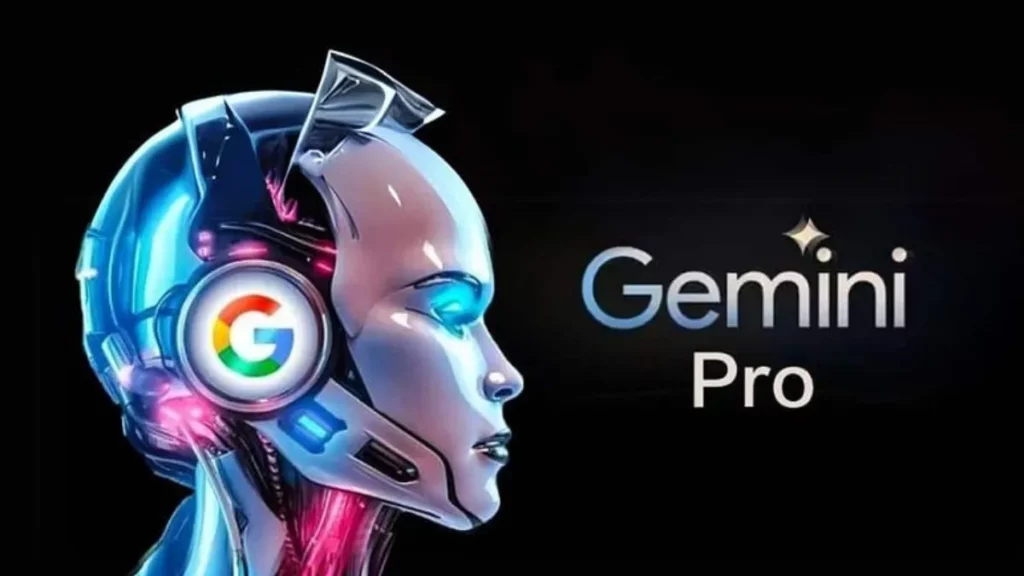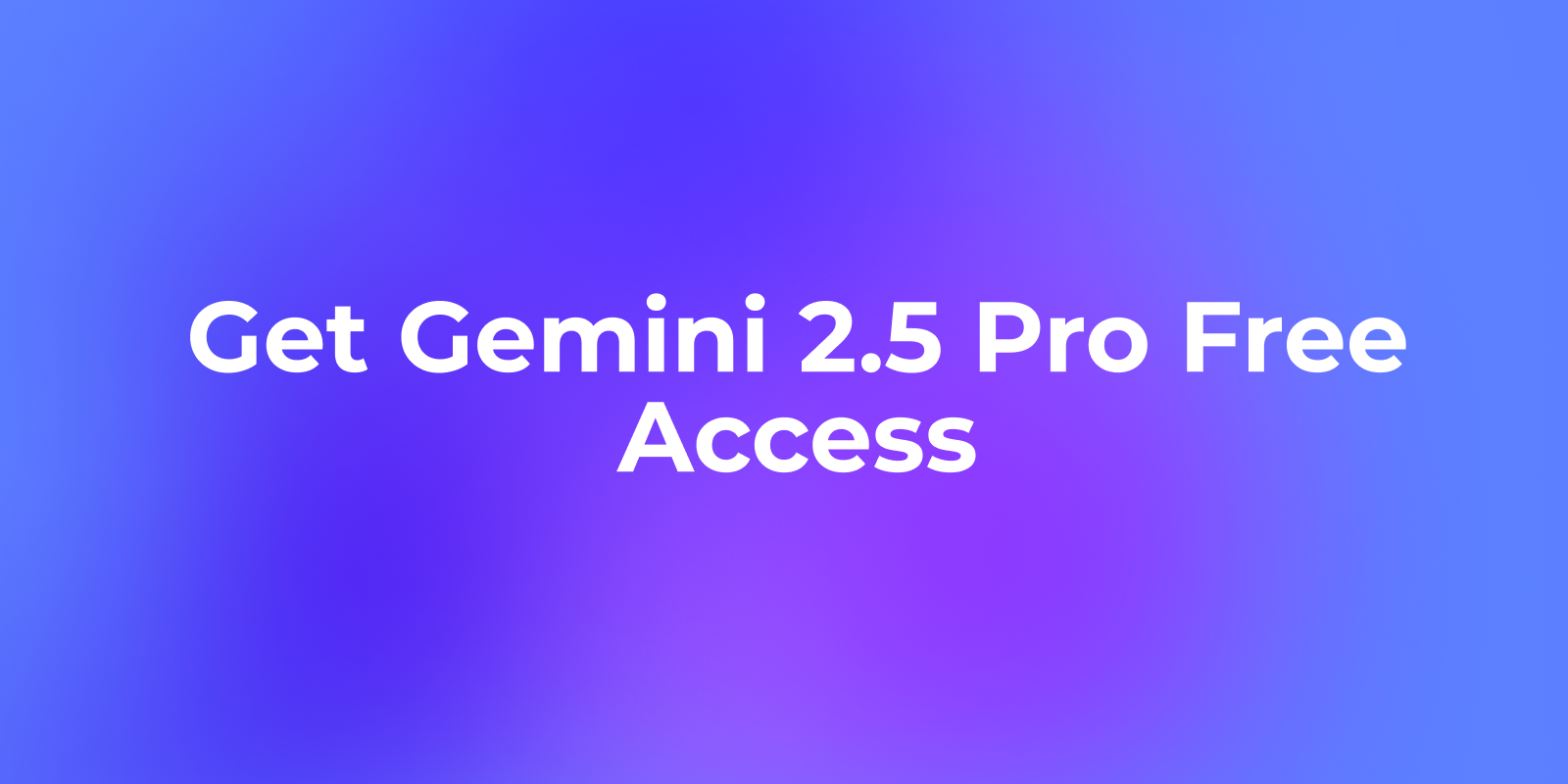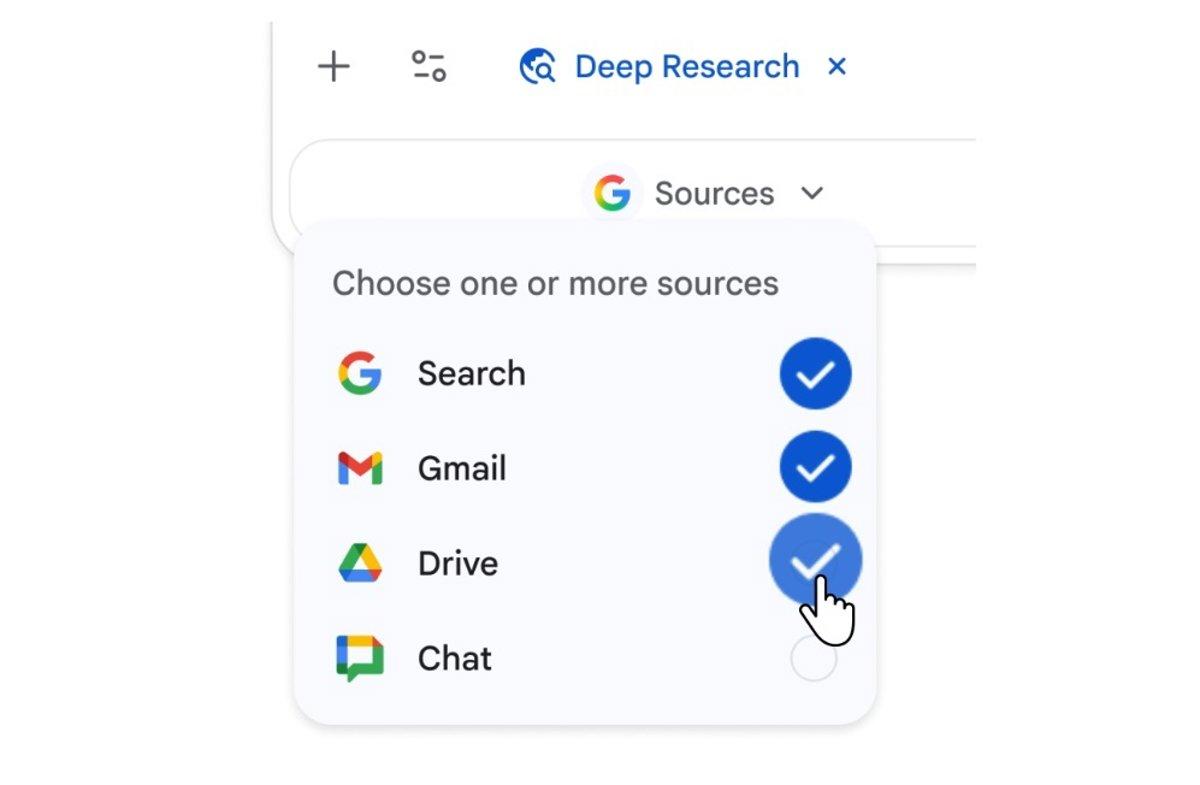- Access Gemini 2.5 Pro officially from the web and Google AI Studio, with limits depending on the plan.
- The Google AI Pro plan for students offers one free year with SheerID verification.
- Unofficial libraries automate the web, but with risks to stability and TOS.
- For SSE streaming, use debugging tools that merge fragments and prevent errors.

Many users are interested in how access Gemini Pro in the simplest and most economical way. In fact, it's possible to do it for free. In recent months, new methods, student programs, and even experimental options have appeared online, along with unofficial alternatives that should be approached with caution.
In this guide, we've gathered everything you need to know to use Gemini 2.5 Pro and its experimental variant in one place: from the web app and Google AI Studio, to the Google AI Pro plan for students, including differences in limits between free and paid access, account requirements, and availability by region.
What is Gemini 2.5 Pro and why is it of interest?
Gemini 2.5 Pro It is presented as Google's most advanced reasoning model to date, with improvements in tool usage, multimodality, and handling of extensive contexts, thus facilitating complex analysis, programming, and creative collaboration with consistent quality. In practice, this translates into more informed and better-targeted responses to difficult tasks.
Among its stated capabilities, it accepts inputs of text, imagesaudio and videoAlthough the output remains in text format, this combination makes it possible to work with heterogeneous materials, from long documents to captures, recordings, or clips, integrating everything into a single workflow focused on reasoning.
In terms of context, announcements are being made up to 1 million tokens Initially, with a planned expansion to 2 million, the initial offering can reach 64.000 tokens, which is useful for extensive summaries, step-by-step analyses, or multi-layered technical explanations, helping to avoid falling short when formulating answers.
The most recent documentation shared by the sources consulted places the knowledge limit in January 2025This is relevant if your use case requires very up-to-date data. In any case, the main strength of 2.5 Pro lies in its reasoning: it processes data step by step and supports tasks such as mathematics, engineering, or software development with greater ease.
Furthermore, the Gemini ecosystem emphasizes working with long materials. The web app allows, where available, Upload files of up to 1500 pagesThis allows you to leverage industry reports, minutes, transcripts, or extensive PDFs to extract ideas, write content, generate pages, scripts, or subtitles for different platforms.

Official and free channels from the web app
The most direct and supported way to test the model in practice is to access the Gemini web app at the address gemini.google.comThere you'll find access to the latest models in the family, including the Gemini 2.5 Pro variant in its experimental edition when it's available in your region and account.
The process is simple: you go to the website, log in with your Google account, and select Gemini 2.5 Pro in the model selector when it appears. Then you can start chatting, attaching supported files, and exploring features like text generation, brainstorming, code assistance, or, if applicable, image creation and use of Workspace extensions.
According to information shared by Google on public channels, the experimental version of 2.5 Pro is "taking off" to reach "more people as soon as possible." In some cases, it is indicated that Logging in would not be essential For basic interaction, logging in allows you to keep history and adjust options, so it's recommended for management and continuity.
This web platform is used for evaluate the model without dealing with API keys or token costsIdeal if you enjoy hands-on interaction, prompt testing, or personal productivity. However, availability may vary by account and location, and there are usage limits for the free tier that should be considered to avoid interruptions.
Official developer access: Google AI Studio and API
If your goal is to integrate Gemini in a programmatic way, the natural step is Google AI Studio and Google's official generative AI API, where Gemini 2.5 Pro Experimental is showcased. Here we're talking about pay-as-you-go pricing, with token-based costs, and an environment designed to orchestrate workflows, enable tools, and robustly manage projects.
The API facilitates structured responses, handling of long contexts, and features such as streaming with SSE to view the output as it is generated. This mode is appropriate for automating processes, integrating into applications, running batches, and controlling versions and deployments with confidence.
As this is an experimental model, Google warns that issues may arise. updates that alter performance or functionsIt is good practice to monitor release notes and adjust settings or prompts when the vendor releases changes.
In terms of availability, the description indicates that Gemini 2.5 Pro Exp is offered to both plan users and users of the plan. Gemini Advanced As with AI Studio for developers, this is always subject to region, usage policies, and potential fees. If you need contractual stability and support, this is the official and most secure option.

Student plan: Google AI Pro free for one year
Google has launched a promotion that allows university students over the age of 18 to access Google AI Pro free for one year, with verification via SheerID. It's an initiative to bring Gemini closer to higher education and strengthen digital skills in the classroom.
Once academic status is verified, students gain access to Gemini 2.5 Pro It already includes features like Deep Research, with direct integration into Gmail, Docs, Sheets, Slides, and Drive, as well as 2 TB of storageIn some countries, experimental capabilities such as video generation with Veo are being added.
To register, go to the official Gemini student program page, follow the verification process with SheerID, and after approval, activate the option to Google AI Pro for studentsThe documentation also states that verification may take between 24 and 48 hours, so it's worth taking that into account.
One important detail: when the free period ends, your subscription may automatically switch to a paid plan if you don't cancel it. Therefore, it's recommended that you check your renewal date in advance and, if you prefer, Cancel from Google Play subscription management after the exchange, maintaining access until the renewal date.
The offer has initially been mentioned for countries such as the United States, Brazil, Japan, Indonesia, and the United Kingdom, with potential for expansion. Check availability in your region and that your participating institutionsince access depends on eligibility and local support for the promotion.
Limitations of free access versus Gemini Advanced
In the experimental phase opened via the web, limits have been communicated for free use, for example up to 5 requests per minute and 25 per day, with a processing capacity of up to 1 million tokens per minute. These are indicative figures that help to put everyday usage into perspective.
The Gemini Advanced payment plan lists clear advantages: 100 requests daily20 per minute and a capacity of 2 million tokens per minute, plus an expanded context window. If you work with batches, intensive integrations, or very large loads, the paid plan makes all the difference. choose the best AI for your needs.
Remember that the free, accessible variant is described as experimentalTherefore, you might notice occasional latency, inaccuracies, or errors. However, it opens the door to complex day-to-day tasks without initial investment, and it's an excellent way to test the waters before scaling.
In any case, check your account section and the product information messages, as Google may adjust fees and conditions over time or depending on the usage profile and the region you are in.
Availability, accounts, and mobile app
To access the Gemini web app, you generally need a Google accountSelf-managed personal accounts and work or educational institution accounts are accepted, provided the administrator has enabled Gemini access for the domain.
Regarding age, it is indicated that with a personal or educational account you must be 13 years or the applicable minimum age In your country; for work accounts, you must be over 18. These requirements are important if you use Gemini with family profiles or in regulated school environments.
It is not possible to access with an account managed by Family LinkIf you're a Google Workspace administrator, you'll need to enable Gemini for domain users from the console, respecting internal policies and limits. For end users, if you can't log in, it might be an administrator restriction.
Regarding the mobile app, on some phones it is possible to use the Gemini app It is available in your country and on your device, but the availability of 2.5 Pro in apps may vary in stages. If you don't see it, try from the web, check your region, or try again later.
If you need to exit the web app, open the user menu in the upper corner, look for the option to Sign off and confirm. If an error prevents you from logging in, it's usually due to your location, age, or account type; try again later or review the access requirements and service policies.
Uploading and analyzing large files on the web
One of the practical features of the Gemini web environment is the ability to Upload documents up to 1500 pagesThis is especially useful for content, marketing, or research teams that work from reports, minutes, video transcripts, or extensive notes.
With that material, you can ask the model to propose Ideas for articles, executive summaries, or structures for websites, as well as subtitles for social media, newsletter drafts, or video scripts. In practice, it unlocks a much larger "canvas" for leveraging previous resources.
The key is that this load combines with the reasoning of 2.5 Pro and its broader context, making it feasible to synthesize large corpora, compare sections, and draw conclusions without losing track. It's especially practical if you work with internal knowledge bases.
If you're going to process sensitive material, apply your organization's policies and avoid uploading data that shouldn't be shared. Whatever the scenario, the wisest course of action is review the results and corroborate the information with reliable sources when critical.
Programmatic access at no direct cost (unofficial)
The developer community has created libraries that automate the free web interface, allowing prompts to be sent automatically. Programmatic advertising without paying for the official APIThey work by reverse engineering internal calls and authentication via browser cookies.
Although tempting for prototyping, several warnings must be noted: they are not supported by Google, they can break if the website changes, and their use could violate the terms of serviceFurthermore, extracting session cookies entails security risks if not handled with extreme care.
The typical flow involves logging into gemini.google.com, opening the developer tools, capturing the authentication cookies (for example, __Secure-1PSID and __Secure-1PSIDTSand use them in the library to initiate a programmatic session. Some tools attempt to automatically read cookies from compatible browsers.
These libraries typically replicate web functions: multi-turn chat, file uploads, image generation calls when enabled by the environment, and even the use of extensions like @Gmail or @YouTubeHowever, its stability is not guaranteed and the risk of blocking or misuse exists.
The recommendation, if you need serious integration or are going to put something into production, is to opt for Google AI Studio and the official API. Unofficial solutions are for later. local experiments and learning, assuming the security and compliance implications.
Debugging Streaming Responses (SSE) with specialized tools
When working with LLMs via API, it is common to receive responses in streaming via SSEToken-by-token or fragment-by-fragment methods are great for UX, but debugging with generic HTTP clients can be a nightmare due to data fragmentation.
Tools like Apidog are designed for the complete API lifecycle and, in particular, to untangle the AI provider streamingThey automatically detect the Content-Type text/event-stream and display a real-time timeline of messages as they arrive.
In addition to the chronological view, Apidog integrates logic for merge fragments in common formats: compatible with OpenAI, Gemini, Claude APIs, or Ollama's typical NDJSON streaming. This avoids manually copying and pasting snippets when trying to reconstruct the final response.
Another advantage is that, when the provider transmits metadata or signals about the reasoning process, the tool can visualize that context in an orderly fashion on the timeline itself. For those who debug prompts or evaluate quality, seeing the evolution of the output greatly facilitates diagnosis.
If your goal is to iterate quickly with SSE, it's worth using a debugging solution that understands these protocols. However, keep in mind that actual support depends on how you implement it. stream it each supplier and model version, and the specific headers of the response.
Beyond the operational details, the central idea is that today there are real and varied options to carve out a niche for yourself in Gemini: via the official website, AI Studio, a program for students, and, with caution, unofficial tools to automate testing. With a little organization and common sense, you can turn that variety into an advantage, without losing sight of security, stability, and terms of use.
Editor specialized in technology and internet issues with more than ten years of experience in different digital media. I have worked as an editor and content creator for e-commerce, communication, online marketing and advertising companies. I have also written on economics, finance and other sectors websites. My work is also my passion. Now, through my articles in Tecnobits, I try to explore all the news and new opportunities that the world of technology offers us every day to improve our lives.
